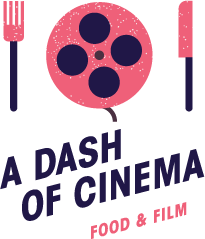At the Dinner Table: PRETTY WOMAN
The dinner table; a place for families, friends, acquaintances, and strangers to meet and break bread, settle business deals, discuss the days behind, and the days ahead. For as longs as I can remember and surely many hundreds of years beyond that, the dinner table, in whatever shape it may have been, was and still is a place of connection.
A business meeting disguised as a casual dinner is how I would describe an iconic scene from the classic romantic comedy, Pretty Woman. Edward Lewis (Richard Gere) has been working tirelessly to close a deal with James Morse (Ralph Bellamy) and purchase Mr. Morse’s ship manufacturing company. Edward is normally a ruthless and cunning businessman, who always closes the big deals, but has been slightly distracted since meeting Vivian Ward (Julia Roberts) a woman who sells her body for money. There is something intoxicating, alluring, and disarming about the charming lady of the night. She has caused Edward to lose his edge and distracted him from the important transaction. Her impact is most apparent during a lunch scene where Vivian is invited to attend a meeting between Edward, James, and James’ grandson David (Alex Hyde-White).
This scene is very important for the development of the second half of the film. It shows the willingness of Vivian to be the lady that Edward requires. She works with Barney the Maître d’hôtel to gain the required knowledge to be proper during dinner. The scene also solidifies Edwards’s infatuation with Vivian as he is literally distracted by her beauty and actions while she curiously decides which fork and spoon to use with each course. But why does Director Garry Marshall use a meal scene as the set for such a pivotal point within the plot? I believe that this is because meal scenes lend themselves to be a way for writers and directors to reveal where the characters currently are and where they are heading. We see a shark businessman begin to morph into a flounder and an escort transform into a faithful and appropriate woman. The ability of the breakfast, lunch, or dinner table to develop characters and move forward the plot within a film is the single most important use of the aforementioned and will continue to be the backdrop of classic cinematic scenes for as long as we continue to eat and cook food.

